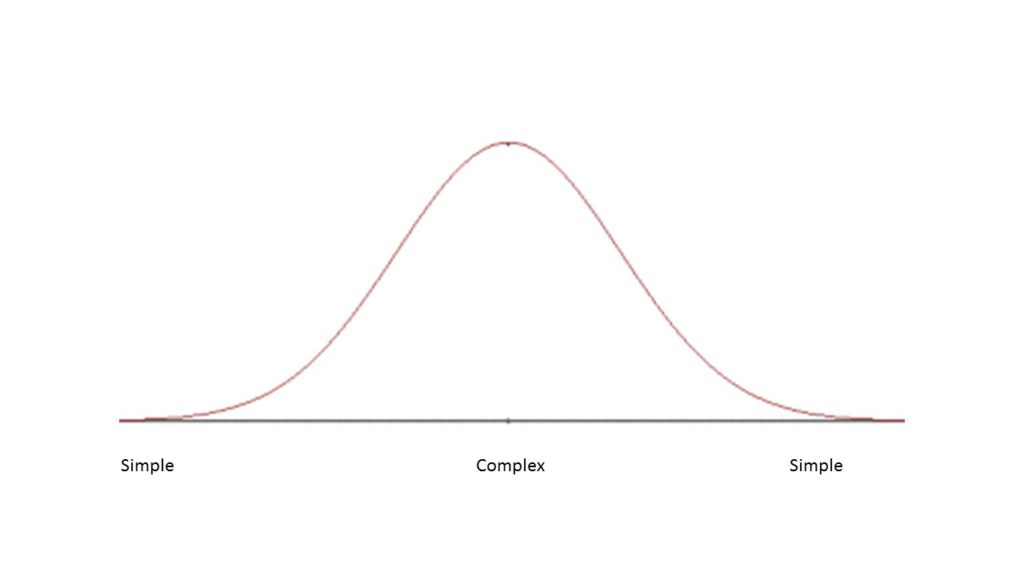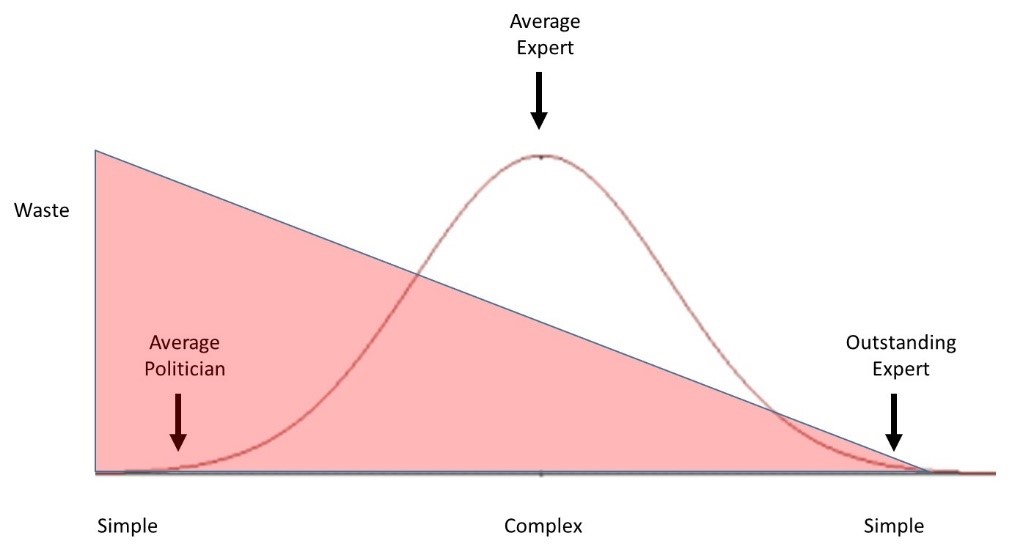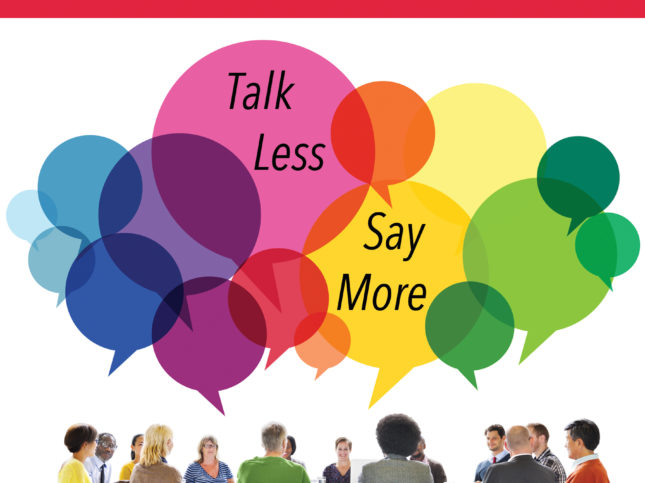Bad Simplicity, Complexity, Good Simplicity
The best way to add value and reduce waste in communication is to provide your audience with “simplicity on the other side of complexity”.
I first came across this phrase in a fascinating blog post titled: Simplicity on the other Side of Complexity, by John Kolko, and he in turn took it from Chief Justice Oliver Wendell Holmes who said, “I would not give a fig for the simplicity on this side of complexity, but I would give my life for the simplicity on the other side of complexity.”
The phrase resonated with me because it explains so clearly an idea that I am constantly trying to impart to participants in my lean communication and presentations classes. One of the most common reasons that companies bring me in to work with their teams is that their executives complain that they have to sit through unnecessarily complex and excessively detailed presentations, where masses of data substitute for clear understanding. The common complaint is “I ask what time it is, and they tell me how to build a watch.”
When you have to make a presentation to busy high-level decision makers—whether internally or to a potential customer—it’s because they need information to grasp the key issues about a complex decision, so that they can take effective action to improve outcomes. The simplicity with which you express information clearly adds value to them, because it reduces uncertainty and saves time and effort. But only if it’s good simplicity, which resides on the other side of complexity.
In essence, the gist of Kolko’s article is that the learning curve for a complex issue looks like a bell curve (I’ve added the labels to his simple drawing, and the rest of this article includes my additions to his):
At the far left, when people first approach an issue, they know very little about it, but of course that doesn’t stop most of them from jumping to conclusions or forming opinions. People who are intellectually lazy or who use motivated reasoning don’t proceed past this stage and enjoy the confidence born of ignorance. They forget what H.L. Mencken said: “Explanations exist; they have existed for all time; there is always a well-known solution to every human problem — neat, plausible, and wrong.” For examples of this type of presentation, just think back to the past two weeks of US Presidential conventions. This kind of simple is almost pure waste, because it’s either wrong, or it’s trivial.
But you’re a business professional, so you can’t afford to be intellectually lazy because you know if you present a simplistic and shallow case you will be eviscerated in the boardroom. So you take your time, gather evidence and analyze it, and see greater depth and nuance in the issues. If you stick to it, you eventually become an expert; you “get it”, so that’s the next natural stopping point. Complexity is the point at which the average expert feels they are ready to present their findings. However, the biggest mistake they make is that they include far more detail than the listener needs to use their findings, either through defensiveness or inability to connect to what the listener cares about. As one CEO told me, “I get a lot of detail but very little meaning.” They may have added value, but there is still a significant amount of waste, in the form of time, effort, and confusion.
Outstanding expert presenters know that you never truly know how well you know something until you try to explain it to others, so they take the next logical step. They add value to their listeners by distilling all their hard-won complexity into just the meaning the listener needs for their purposes. They know exactly why the listener needs the information, and give them just what they need to know to make the best possible decision, so that there is zero waste. Most times, they go beyond merely providing information and advocate for a specific decision (which is a given if it’s a sales presentation)—but it’s based on highly informed judgment.
The tools for achieving this type of good simplicity are the tools of lean communication: Outside-in thinking to know what the listener needs, Bottom Line Up Front to provide meaning right away, SO WHAT filter to root out waste, and pull to make adjustments as necessary.
Before you decide to strive for good simplicity, I would be remiss in not pointing out one personal risk you might run: if your goal is to call attention to how smart you are, it may not be the best way. As Kolko says, “The place you land on the right—the simplicity on the other side of complexity—is often super obvious in retrospect. That’s sort of the point: it’s made obvious to others because you did the heavy lifting of getting through the mess.”
But if your goal is to get the right things done, simplicity on the other side of complexity is the only way.








